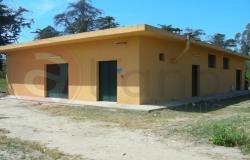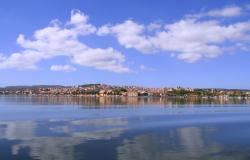Sardinia is the second largest island in the Mediterranean. Situated between the Tyrrhenian and the Sardinian Sea, it is mostly known for its natural beauty and geographical position, and particularly for its wonderful coastline.
It is one of the most popular destinations for lovers of aquatic sports and seaside holidays. The Emerald Coast, in the north east of the island, is particularly well developed and one of the most exclusive spots in the entire country. The coastline is mostly high and rocky, and surrounded by several smaller islands, such as Asinara, the Maddalena group, Tavolara, San Pietro and Sant'Antioco.
Nevertheless, until relatively recently the local population inhabited the inner lands so as to be protected from the waves of various invaders the island faced over the years, and the economy was based on sheep-raising and connected activities. In fact, the region is also known for its mountainous and rugged territory, consisting of mountains which are characterized by a very different geological aspect from the rest of Italy (Limbara, Supramonte, Ogliastra, Gennargentu and Iglesiente and Sulcis). The territory also has unique archeological remains dating back to thousands of years ago, called "nuraghi".
Cagliari is the capital of the region and lies on the south coast of the island towards the centre of the Gulf of Cagliari. It rises behind Via Roma culminating in the ancient majesty of the Castello quartiere. The city was probably founded in the 9th century b.c by the Phoenicians and grew from the 7th century onwards, with the presence of the Carthaginians who made it an important trading base. Subsequently under the rule of various dominators, the city has inspired poets and writers and displays a rare, unusual beauty.
The economy of the island is mostly based on tourism and agriculture. Historically, the island has produced cork and artisan crafts ranging from carpets to its characteristic filigree jewellery widely appreciated for their quality. Industry is concentrated around four main cities: Cagliari and Porto Torres (chemicals and petrochemicals), Ottana (chemicals and textile fibres) and Porto Vesme (metallurgy). A sector which is undergoing great expansion is that of new technologies, especially telecommunications.
Sardinia is Italy's first producer of organic produce, covering nearly a third of the nation's land cultivated with organic methods. Tomatoes are used generously in various kinds of sauces, as are artichokes, broad beans, eggplants and zucchini. The sea and the rocky coasts provide lobsters, crabs, anchovies, squid, clams and sardines. In Oristano dry mullet eggs are dried into blocks of bottarga or buttariga to flake over pasta or salads. Spicy fish soups are also typical and are called burrida and cassòla.
However, the real Sardinian cooking is the rustic food of the hills and heart of the island: roast meats, sausages and salame, savory Pecorino Sardo cheese, Fiore Sardo DOP. Near the town of Nuoro, they prepare the porceddu by skewing a pig on a pole of aromatic wood and roasting it slowly on an open wood fire. Typical of Sardinia are also the ravioli-like culingiones and the gnocchi called malloreddus.
The number one Sardinian wine is the Vermentino di Gallura DOCG white wine. The Vermentino, with its delicate aromas of fruit and hint of almonds. In Gallura, there is a successful production of Moscato and Nebbiolo grapes. Among the DOC Sardinian wines are the 'Moscato di Tempio DOC', Mandrolisai DOC, Malvasia di Bosa DOC, Vernaccia di Oristano DOC, Nuragus di Cagliari DOC, Malvasia di Cagliari DOC, Carignano del Sulcis DOC.






